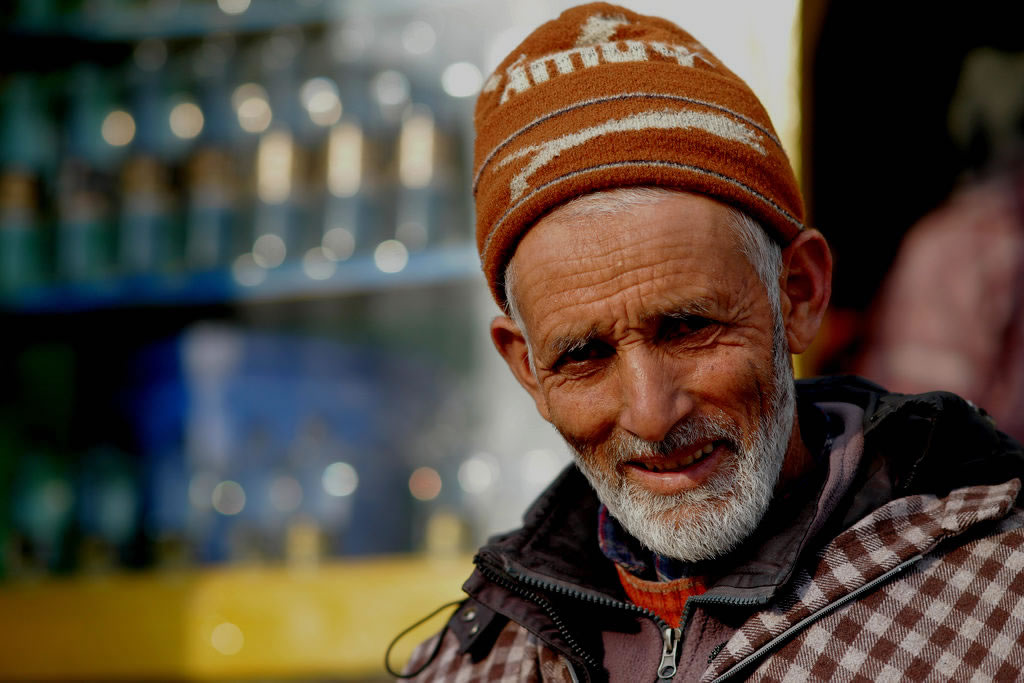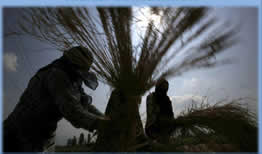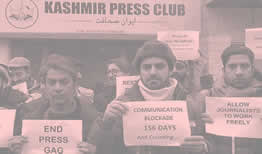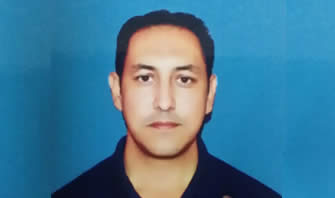Preserving Kashmiri Culture and Identity During Conflict
Preserving Kashmiri Culture and Identity During Conflict
Abstract
Kashmir, often called “Heaven on Earth,” is a region renowned for its rich cultural heritage and distinct identity, shaped by its unique history, religious diversity, and geographical setting. However, the ongoing conflict in Jammu and Kashmir has severely threatened the preservation of this cultural identity. The militarization and socio-economic disruptions have not only disrupted traditional practices and community identity but also led to a decline in the use of the Kashmiri language, particularly among the youth and diaspora. This research examines the complex effects of the conflict on Kashmiri cultural expression, including traditional arts and crafts, folk music and dance, and cultural heritage sites.
By Noor ul ain Dabeer kazmi
BS Peace and Conflict Studies National Defence University
The study highlights the challenges to preserving these cultural aspects, such as the diminishing use of the Kashmiri language, the risks faced by traditional arts and crafts, and the deterioration of heritage sites. Despite these challenges, there have been successful efforts to preserve Kashmir’s cultural identity, including restoration projects, community-led initiatives to maintain traditions, and the role of cultural heritage in fostering resilience and solidarity.
The research aims to identify effective strategies for preserving Kashmir’s cultural identity and contribute to academic discourse and policy-making in the area of cultural preservation during conflict. Utilizing a qualitative research methodology based on secondary sources, the study provides a comprehensive analysis of the situation in Kashmir. The findings underscore the critical importance of preserving cultural identity as a means of sustaining social cohesion and resisting the erosion of heritage in the face of ongoing conflict.
Keywords: Culture, Kashmir, Militarization, Cultural Identity, Heritage, Conflict
Introduction
Kashmir is known as “Heaven on Earth” and is rich in cultural heritage, norms, and identity. Language is a main part of culture. Kashmiri is the local language of Jammu & Kashmir. Kashmiri, which is an Indo-Aryan language, is also known as Koshur. Kashmir has a rich culture that is closely linked to its history, religion, and location. Being at the intersection of various civilizations, the region has developed a variety of cultural practices, languages, and traditions. The mix of Hinduism, Buddhism, and Islam has created a unique cultural identity seen in its art, music, literature, and daily life. Kashmiri literature, which combines Persian, Sanskrit, and local influences, offers deep insights into the region’s history and culture. However, the region enduring conflict has faced multidimensional challenges to preserving its unique cultural inheritance.
Kashmiri people go through the multifaceted impact of conflict on Kashmiri cultural expression, traditional practices, and community identity as a result of militarization and socio-economic disruption. A large number of Kashmiris escape, migrate, and leave their norms, values, beliefs, traditions, culture, and identities in their homeland, adopting new cultures and identities in their host countries. But it is a big threat to Kashmiri culture because enemies want to vanish Kashmir’s identities and culture. War and conflict steal identities and culture from nations. As we have seen in WW2, European Jews left their home countries and started living in their host countries; they lost their culture, identity, and country due to war. In addition, we have seen the Rwandan genocide in which Hutu and Tutsi identities were manipulated. Senior citizens of IIOJK are worried about their ancestral culture, traditions, and identities because they see their culture, language, and identities in a danger zone. Conflict has caused major changes in the community’s traditions, as seen in Kashmir. There were the Bakarwals, who are Sunni Muslims and usually have long beards, and are wrongly associated with terrorism by security forces; 75% of them avoid growing beards.
Many men no longer wear their traditional turban or knee-length salwar kameez. The diaspora community is a major example of suffering from the critical situation because they know they have nothing left in the conflict zone. So, in this research, we will identify effective strategies to preserve Kashmir’s cultural identity and their strength toward each other. This research will also help further academic knowledge to understand the cultural impact on society and advise in policy-making to support cultural and identity preservation in conflict. In this research, we are using a secondary research methodology in which we will adopt a qualitative research approach. It is a valuable approach for studying the preservation of Kashmiri culture and identity.
“He who has no identity in the world is lost. To know where you are going, you must understand where you come from.” — Lailah Gifty Akita As the poet said, the world will accept you only when you have an identity. Otherwise, no one recognizes you in this world, and you are lost. It is necessary to preserve culture and identity.
Culture Aspects at Risk
Identity
Kashmiriyat is a social, cultural, and ethno-national consciousness that has developed over centuries among the people of the Kashmir Valley. It represents a unique identity based on mutual coexistence, tolerance, and a shared cultural heritage that transcends religious differences. The prolonged conflict in Kashmir has deeply impacted the concept of Kashmiriyat, the region’s traditional ethos of cultural pluralism, religious tolerance, and communal harmony. The violence, political polarization, and militarization have eroded communal bonds, leading to mistrust, segregation, and a shift toward more radicalized identities.
The displacement of communities, such as the Kashmiri Pandits, and the disruption of cultural practices have further weakened this inclusive identity. While many still uphold Kashmiriyat as a symbol of unity and resilience, the ongoing conflict poses significant challenges to its preservation, especially for younger generations who have grown up amidst division and strife. Kashmir has long been known for its rich cultural heritage and deep historical roots, but over the past millennium, the region has faced numerous challenges. Foreign invasions and infiltration disrupted its cultural fabric, leading to significant existential crises. In recent times, radicalization has further intensified, causing some people to believe that the world around them is irrational and hostile, leading to a focus on resistance and separation. This has resulted in suffering for many Kashmiris, including the persecution of minorities and the silencing of moderate voices.
As Kashmiris have become increasingly disconnected from their cultural heritage, they risk losing their true identity. Many no longer understand the deep meanings behind their surnames, which have been altered over time. For example, “Bhat,” derived from the Sanskrit word for “scholar,” has become “Butt,” losing its original meaning. Place names in Kashmir, such as Srinagar and Baramulla, also have rich Sanskrit origins that are now largely forgotten. This disconnection from the past has weakened societal awareness and sensitivity toward their real identity and culture. Understanding and reconnecting with their historical roots could help Kashmiris regain a sense of pride and continuity with their rich heritage.
PAULO COELHO quoted:
“Culture makes people understand each other better. And if they understand each other better in their soul, it is easier to overcome the economic and political barrier.”
Culture is more about combining beliefs, norms, and practices in society. Culture is a living organism for society. Every state, province, city, village, and town has its own culture and identity, just as India-occupied Jammu and Kashmir has its own vast culture, identity, traditions, beliefs, heritage, and arts. But from 1947 until now, the valley of wonder has been suffering in the ongoing conflict, and its beauty has been lost to ruined, destroyed land, with its cultural identity fading into the ruins.
Language
Language is the most affected aspect of Kashmiri culture and identity in the ongoing conflict. The language of IIOJK is Kashmiri, but with the passage of time, the Kashmiri language is declining, particularly among the youth and in the diaspora community. In an interview with the Kashmir News Observer, renowned poet and writer Zareef Ahmad Zafeer highlighted the historical context that the Kashmiri language originated 5,000 years ago. He said that the English language and other official languages impact our mother language, resulting in cultural loss. He pointed out that English medium schools have impacted the use of the language.
Social activist Bilal Bhat from Ganderbal is worried about the decline of the Kashmiri language, especially among the youth. During school visits, he saw that many kids couldn’t speak or understand Kashmiri. He recognizes the importance of English but stresses that Kashmiri shouldn’t be neglected. Bhat believes parents and elders are responsible for this. Now, they should ensure kids learn Kashmiri to preserve their culture and identity.
Nelson Mandela:
“Mother tongue is not just a language; it is a sense of identity and belonging.”
Languages are deeply connected to culture, history, and identity. Losing linguistic diversity can result in the loss of cultural heritage and traditions. Nations that abandon their language will vanish soon.
Traditional Art and Craft
India-occupied Jammu and Kashmir is renowned for its traditional art and craft, and it is one of the main aspects of culture representing them. They make different types of hand products, including textiles, carpets, rugs, sweaters, phulkari, woodwork, and many more. Their main source of income is handicraft items, which they make and sell in the market. Not only does this help their income, but people also become aware of Kashmiri culture and traditions. Their embroidery designs and handmade items are their true identity. Pashmina is the most famous handicraft in Kashmir. The name Pashmina ultimately recalls Kashmiri culture and identity. The craft is not only their cultural identity but also a source of self-worth, connection with their heritage, and healing.
“The industry suffered during the 1989 conflict, with many artisans leaving their areas for a better life. Recent violence threatens its revival. Challenges include high raw material costs, competition from cheaper substitutes, and young Kashmiris’ lack of interest due to low pay. The ongoing turmoil puts the ancient craft of Kashmiri knit at risk of disappearing.
Folk music and Dance
Jammu and Kashmir have rich with cultural accepts one of them is folk music and culture dance .Chakri is the main type of traditional music and famous dance of all region of Jammu and Kashmir is Rouf which is pronounced ruf in villages and row in cities. These sites are at risk due to ongoing conflict . The conflict impact social gathering and cultural events where these art are execued.
Culture heritage sites
IIojk is land of diverse nations Muslims, Hindus,and Buddhist and they all have their culture and identities.Jammu Kashmir have 56 heritage site of different identities such are hari parbat fort,ahknoor fort,bhimghar fort ,aishmuqam shrine,jamia masjid and hazratbal shrine .
“Multi-culture is the real culture of the world – a pure race doesn’t exist.”
KEANU REEVES
Kashmir’s rich cultural heritage has inevitably been both collateral damage and a deliberate target.in conflict .a prolonged civil war has overshadowed this heritage, leaving a generation of Kashmiris disconnected from their cultural roots.A survey by the Indian Trust for Art and Cultural Heritage (INTACH) included interviews with 1,600 people and extensive field research, revealing that 98 percent of the youth experienced a significant “cultural disconnect.” Saleem Beig, head of INTACH in Jammu and Kashmir, highlighted the widespread lack of awareness about Kashmir’s cultural heritage.This disconnect is evident in the low community service participation (only two percent), the desire of 30 percent of residents to leave the historic ‘old city’ due to inadequate infrastructure, and limited knowledge of famous religious and architectural sites. For example, school children on a heritage tour could name only two heritage sites and were unaware of key landmarks like the Masjid and the Hazratbal shrine.
Challenges and successes in preserving Kashmir’s culture and identity
In Jammu and Kashmir, the preservation of cultural heritage amidst conflict has seen both successes and challenges:
Challenges
Jammu and Kashmir’s cultural heritage includes Hindu, Buddhist, and Islamic traditions, visible in its old temples, shrines, manuscripts, and artworks. However, the ongoing conflict since the late 1980s has seriously endangered this rich heritage. The ongoing conflict has led to the destruction of numerous cultural sites. The most notable example is the devastation of historical mosques and temples during periods of masses violence. The destruction of the Jamia Masjid in Srinagar in 1990 is a stark example of how conflict has directly harmed cultural assets. According to “Kashmir: The Unwritten History” by Sumantra Bose, the destruction of such sites has not only erased physical landmarks but also severed links to the region’s rich historical and cultural narratives.Violence and conflicts can destroy important cultural sites and traditions, which threatens the identity.
The conflict has caused many people to move, which has led to the loss of traditional knowledge and cultural practices .This forced migration has disrupted the transfer of traditional skills and customs. Neelam kaul (Kashmiri pandit singer at Radio Sharda) ones said in her interview that After our migration from Kashmir, we lost touch with our roots and got exposed to different cultures .
In another interview Kusum Dhar, retired school principal and teacher says
If we distance ourselves from our own language, we will lose our identity.” One of the main obstacle In Jammu and Kashmir is inadequate resources. They have severely impacted efforts to preserve cultural heritage. Funding shortages have been a major hurdle, limiting the capacity to undertake comprehensive restoration and protection projects. This often results in only partial progress, leaving many sites in poor condition. Furthermore, the ongoing conflict has made it difficult to recruit and deploy experts essential for specialized preservation work. The unstable situation deters professionals with the necessary skills, worsening the decline of cultural heritage sites.
Together, these financial constraints and the lack of skilled personnel have created a challenging environment where preserving Jammu and Kashmir’s cultural legacy remains a significant struggle amid the broader conflict issues.Security concerns in Jammu and Kashmir have significantly hindered cultural preservation efforts. Ongoing security issues frequently restrict access to cultural sites, complicating the tasks of assessment, repair, and documentation by preservation teams. Additionally, the instability has often led to increased vandalism and theft of cultural artifacts, further threatening the preservation of heritage. Political and social instability exacerbates the situation, as conflicting interests and priorities can push cultural preservation to the background, overshadowed by immediate security concerns. Consequently, preservation efforts are sometimes neglected in favor of addressing more pressing conflict-related issues, leading to further deterioration of valuable cultural sites. This combination of restricted access, vandalism, and shifting priorities creates a challenging environment for safeguarding Jammu and Kashmir’s cultural heritage.
Folk Music and Dance
Jammu and Kashmir are rich with cultural aspects, one of them being folk music and dance. Chakri is the main type of traditional music, and the famous dance of all regions of Jammu and Kashmir is Rouf, which is pronounced "ruf" in villages and "row" in cities. These sites are at risk due to the ongoing conflict. The conflict impacts social gatherings and cultural events where these art forms are executed.
Cultural Heritage Sites
IIOJK is a land of diverse nations—Muslims, Hindus, and Buddhists—and they all have their own cultures and identities. Jammu and Kashmir have 56 heritage sites of different identities, such as Hari Parbat Fort, Akhnoor Fort, Bhimghar Fort, Aishmuqam Shrine, Jamia Masjid, and Hazratbal Shrine.
“Multi-culture is the real culture of the world – a pure race doesn’t exist.”
— KEANU REEVES
Kashmir’s rich cultural heritage has inevitably been both collateral damage and a deliberate target in the conflict. A prolonged civil war has overshadowed this heritage, leaving a generation of Kashmiris disconnected from their cultural roots. A survey by the Indian Trust for Art and Cultural Heritage (INTACH) included interviews with 1,600 people and extensive field research, revealing that 98 percent of the youth experienced a significant “cultural disconnect.” Saleem Beig, head of INTACH in Jammu and Kashmir, highlighted the widespread lack of awareness about Kashmir’s cultural heritage. This disconnect is evident in the low community service participation (only two percent), the desire of 30 percent of residents to leave the historic ‘old city’ due to inadequate infrastructure, and limited knowledge of famous religious and architectural sites. For example, school children on a heritage tour could name only two heritage sites and were unaware of key landmarks like the Masjid and the Hazratbal shrine.
Challenges and Successes in Preserving Kashmir’s Culture and Identity
In Jammu and Kashmir, the preservation of cultural heritage amidst conflict has seen both successes and challenges:
Jammu and Kashmir’s cultural heritage includes Hindu, Buddhist, and Islamic traditions, visible in its old temples, shrines, manuscripts, and artworks. However, the ongoing conflict since the late 1980s has seriously endangered this rich heritage. The ongoing conflict has led to the destruction of numerous cultural sites. The most notable example is the devastation of historical mosques and temples during periods of mass violence. The destruction of the Jamia Masjid in Srinagar in 1990 is a stark example of how conflict has directly harmed cultural assets. According to Kashmir:
The Unwritten History by Sumantra Bose, the destruction of such sites has not only erased physical landmarks but also severed links to the region’s rich historical and cultural narratives. Violence and conflict can destroy important cultural sites and traditions, which threatens identity. The conflict has caused many people to move, which has led to the loss of traditional knowledge and cultural practices. This forced migration has disrupted the transfer of traditional skills and customs. Neelam Kaul (Kashmiri Pandit singer at Radio Sharda) once said in her interview that after their migration from Kashmir, they lost touch with their roots and were exposed to different cultures.
In another interview, Kusum Dhar, a retired school principal and teacher, says,
“If we distance ourselves from our own language, we will lose our identity.”
One of the main obstacles in Jammu and Kashmir is inadequate resources. They have severely impacted efforts to preserve cultural heritage. Funding shortages have been a major hurdle, limiting the capacity to undertake comprehensive restoration and protection projects. This often results in only partial progress, leaving many sites in poor condition. Furthermore, the ongoing conflict has made it difficult to recruit and deploy experts essential for specialized preservation work. The unstable situation deters professionals with the necessary skills, worsening the decline of cultural heritage sites. Together, these financial constraints and the lack of skilled personnel have created a challenging environment where preserving Jammu and Kashmir’s cultural legacy remains a significant struggle amid the broader conflict issues.
Security concerns in Jammu and Kashmir have significantly hindered cultural preservation efforts. Ongoing security issues frequently restrict access to cultural sites, complicating the tasks of assessment, repair, and documentation by preservation teams. Additionally, the instability has often led to increased vandalism and theft of cultural artifacts, further threatening the preservation of heritage. Political and social instability exacerbates the situation, as conflicting interests and priorities can push cultural preservation to the background, overshadowed by immediate security concerns. Consequently, preservation efforts are sometimes neglected in favor of addressing more pressing conflict-related issues, leading to further deterioration of valuable cultural sites. This combination of restricted access, vandalism, and shifting priorities creates a challenging environment for safeguarding Jammu and Kashmir’s cultural heritage.
Success
Restoration efforts have involved multiple initiatives by local and international organizations aimed at restoring and conserving important cultural sites, including temples, mosques, and historical buildings that were damaged during conflicts in Jammu and Kashmir, such as Pari Mahal and Dal Lake. As seen in history, after World War II, extensive efforts were made to rebuild and restore the historic city center of Warsaw, Poland, which had been almost entirely destroyed. Similarly, UNESCO and other organizations have worked to restore ancient temples and mosques in countries like Iraq and Afghanistan, which were damaged during recent conflicts. Efforts to document Kashmir’s intangible cultural heritage have been crucial in preserving its unique traditions. For instance, projects have been initiated to record and archive the region’s traditional Sufi music, poetry, and crafts like Pashmina weaving and papier-mâché.
These efforts ensure that Kashmir’s rich cultural heritage is passed down to future generations, despite the ongoing challenges in the region. Local communities in Kashmir have played a vital role in preserving their cultural practices and traditions, even amid conflict and adversity. The preservation of Kashmiri language, cuisine, and traditional arts, such as carpet weaving and shawl-making, has been largely driven by community efforts. Despite the impact of political and social turmoil, these communities have remained resilient, ensuring that their cultural identity remains intact.
Heritage plays a crucial role in restoring and maintaining peace. In Kashmir, local mosques have become vital community hubs, particularly during times of crisis, such as the lockdown following the revocation of Article 370. During curfews, these mosques served not only as places of worship but also as centers for distributing food and essential supplies, fostering community solidarity. Such religious structures, along with museums and shrines, help strengthen a sense of pride and belonging among the local population. The shared memories and cultural heritage—both tangible and intangible—unite diverse communities and bridge their differences, highlighting the importance of heritage reconstruction in post-conflict recovery.
With each passing day, Kashmir sees its cherished culture, heritage, language, and culinary treasures gradually eroding. Centuries-old traditions that once unified communities are now fading into obscurity. The vibrant fabric of Kashmiri identity, delicately woven through generations, is now in danger of unraveling. Strengthening the protection of cultural property not only ensures compliance with treaties and international obligations but also aids in achieving operational or strategic objectives by securing public support and challenging the narratives advanced by adversaries. Meanwhile, people living under occupation persist in their struggle against land loss by safeguarding their authentic cultural heritage, narrative, identity, and very existence through various means. This paper outlines the efforts of the Kashmiri people to safeguard their cultural heritage amidst ongoing Indian occupation, showcasing their resilience by fostering sustainable livelihoods. These efforts encompass raising awareness of their cultural heritage, language, and identity, as well as supporting the economy by creating job opportunities that reflect a collective commitment to preserving their culture.
Strategy for Preserving Culture
Even during conflicts, it is possible to protect cultural heritage. Successful efforts in the past show that the international community can help by doing three things: (1) quickly putting emergency plans into action; (2) providing temporary extra funding to keep cultural activities going; and (3) helping cultural workers who are in danger relocate. More private partnerships are also needed to share knowledge, support local efforts, and add to limited government and international organization funds. In times of war, cultural heritage is often considered a tragic loss. Recent conflicts have caused significant damage to cultural sites by both state and non-state actors. In Kashmir, the number of impacted sites is rising daily as experts from the country, academia, and international organizations review satellite images, sensor data, and local reports suggesting that the Indian army is responsible for this damage. Given these trends, what measures can be taken to protect cultural heritage during conflict?
Protecting cultural heritage during conflicts requires good planning and quick action. For buildings, monuments, and statues that can’t be moved, they should be covered with sandbags or brick walls to reduce damage. Moveable items, like museum collections, need to be listed, protected, and sometimes hidden or moved to safer places. Emergency plans have allowed cultural workers to safely evacuate museum collections during World War II and protect them in place in Syria, Iraq, and Afghanistan.
The “First Aid to Cultural Heritage in Times of Crisis Handbook” by the International Centre for the Study of the Preservation and Restoration of Cultural Property (ICCROM) is a detailed guide designed to help cultural workers improve emergency plans within their institutions or coordinate cultural first aid efforts during crises. During wars, cultural heritage is often targeted intentionally, not just accidentally damaged. Despite emergency measures like sandbagging buildings or securing museum collections, these efforts may not be enough when conflicts drag on, and cultural sites become deliberate targets. This pattern of targeting is evident in places like Georgia, Syria, Iraq, Afghanistan, and, more recently, Ukraine and Kashmir, where many cultural sites have been damaged due to the Russian and Indian army invasions. International laws, like the 1954 Hague Convention, are supposed to protect cultural sites, but belligerents often ignore these rules and use cultural destruction as a weapon to disrupt civilian life and erase community history. To counter these threats, it is important to provide structural support to the cultural sector.
This includes stabilizing buildings, salvaging collections, and ensuring that cultural workers have the financial support they need, even during conflicts. Remote stipends, fellowships, and long-term capacity-building initiatives can help keep cultural workers safe and ensure that the cultural sector continues to function. In prolonged conflicts, the theft of art and cultural objects becomes a major issue, as seen during Nazi Germany’s looting in World War II and more recently in Kashmir. Cultural workers need to document their collections carefully to aid in future recovery efforts. Finally, as conflicts end, documenting the damage is crucial for reconstruction and proving intentional targeting or theft. Post-conflict recovery often lacks funding, so partnerships between international organizations, cultural institutions, and universities are vital to pooling resources and expertise for rebuilding the cultural sector.
In Kashmir, much like in other conflict zones, cultural workers are increasingly at risk due to the ongoing violence. The deliberate targeting of cultural heritage by state and non-state actors puts those who preserve and protect these cultural sites in great danger. Just as cultural workers in Bosnia, Syria, and Ukraine faced threats and even death while trying to safeguard their heritage, those in Kashmir also face similar risks. For example, like Olena Pekh in Ukraine, cultural workers in Kashmir could be targeted for their efforts to protect sites that are seen as symbols of cultural identity. The cultural targeting observed in Kashmir echoes the pattern seen in other conflicts, where the destruction of cultural heritage is used as a tool to undermine a community's identity and history. Given these threats, the international community must consider the safety and potential relocation of cultural workers in Kashmir. Just as in Syria and Afghanistan, where emergency relocation has been necessary, there may come a time when similar measures are required for those in Kashmir. Support and advocacy for these cultural workers are crucial to ensure they can continue their important work, even if they are forced to leave their homes for their safety.
Conclusion
Preserving Kashmir’s culture and identity during ongoing conflict is a challenging yet essential task. The region’s rich heritage, intricately tied to its traditions, language, and arts, is under serious threat, facing degradation due to prolonged unrest, neglect, and external pressures. Failure to protect this cultural legacy would lead to the loss of invaluable historical treasures and the erosion of the collective identity that has held Kashmiri communities together for generations.
Nevertheless, successful preservation, backed by strong policies, sufficient resource allocation, and the active participation of local communities, can address these threats. By protecting cultural sites, promoting traditional crafts, and ensuring that the Kashmiri language and customs are passed on to future generations, it is possible to keep the vibrant fabric of Kashmir’s identity intact, even amid adversity. Preserving Kashmir’s culture is not merely about safeguarding the past; it is about ensuring that the unique essence of Kashmir continues to flourish, providing hope and continuity during times of conflict.
Recommendations for Preserving Kashmir’s Culture and Identity During Conflict
Based on the analysis of Kashmir’s cultural challenges and the success stories of preservation amidst conflict, the following recommendations can help safeguard Kashmir’s rich cultural heritage and identity:
Language Preservation Initiatives
- Cultural Education Programs: Establish cultural education programs in schools and communities that emphasize the importance of the Kashmiri language. Include Kashmiri as a compulsory subject in the school curriculum, encouraging children to learn and use their mother tongue.
- Community Language Workshops: Organize workshops for youth and diaspora communities to learn the Kashmiri language and literature, ensuring the transmission of linguistic heritage across generations.
- Media Promotion: Increase the use of the Kashmiri language in media, including local radio, television, and online platforms, to reach wider audiences and keep the language alive in public discourse. (Content creator)
Reviving Traditional Arts and Crafts
- Economic Support for Artisans: Provide financial assistance and subsidies to artisans involved in traditional crafts like Pashmina weaving, carpet making, and papier-mâché. This could include grants, low-interest loans, and marketing support to sustain these crafts as viable livelihoods.
- Skill Development Programs: Introduce skill development programs for young Kashmiris, especially in conflict zones, to learn and continue traditional crafts. Partner with NGOs and cultural organizations to facilitate training and apprenticeships.
- Global Promotion of Kashmiri Crafts: Launch global campaigns to promote Kashmiri arts and crafts, including participation in international craft fairs and exhibitions. This would help in raising awareness and generating income for artisans.
- Cultural Festivals and Events: Organize cultural festivals that celebrate Kashmiri music and dance, encouraging both local participation and international interest. These events can help reinforce cultural pride and continuity.
- Community Engagement: Encourage community participation in preserving folk traditions by forming local cultural clubs and societies that practice and perform traditional music and dance regularly.
Protection and Restoration of Cultural Heritage Sites
- Heritage Site Restoration Projects: Prioritize the restoration of damaged cultural heritage sites with the help of international organizations like UNESCO. This can include historical mosques, temples, and shrines that have been affected by conflict.
- Increased Security for Heritage Sites: Collaborate with local and international authorities to provide increased protection for cultural heritage sites, preventing vandalism and illegal excavation, and imposing fines on those who attempt to damage heritage sites.
- Public Awareness Campaigns: Launch public awareness campaigns to educate local communities about the importance of their heritage sites, fostering a sense of responsibility and pride in their preservation.
- Cultural Exchange Programs: Facilitate cultural exchange programs that allow the Kashmiri diaspora to reconnect with their roots and contribute to cultural preservation efforts back home. This can include cultural tours, language immersion programs, and heritage conservation volunteer opportunities.
Policy and Legislative Support
- Cultural Heritage Protection Laws: Advocate for the creation and enforcement of laws that protect cultural heritage sites, traditional practices, and indigenous languages in Kashmir. Ensure that these laws are aligned with international cultural preservation standards.
- Government and NGO Collaboration: Encourage collaboration between government bodies, NGOs, and international organizations to pool resources and expertise in cultural preservation efforts. Joint efforts can lead to more comprehensive and sustainable outcomes.
By adopting these recommendations, there is a greater likelihood of preserving the rich cultural heritage and identity of Kashmir, even amidst ongoing conflict. These efforts not only protect cultural assets but also empower the Kashmiri people to maintain their identity and resilience in the face of adversity.
References
https://www.globalissues.org/news/2012/12/05/15443
http://brighterkashmir.com/kashmiri-diaspora-preserving-identity-beyond-borders
https://www.greaterkashmir.com/op-ed-2/the-impact-of-conflict-on-cultural-heritage/
https://gjia.georgetown.edu/2022/05/09/protecting-cultural-heritage-during-conflict/
•Koul, Omkar N. “The Kashmiri language and society.” Kashmir and it’s
People: Studies in the evolution of Kashmiri society (2004): 293-324.
•Mohan, Rakesh. “Language planning and language conflict: the case of
Kashmiri.” (1989): 73-
•Kachru, Braj B. “The Dying Linguistic Heritage of Kashmiri Literary
Culture and.” Cultural heritage of Jammu and Kashmir (2009): 258.
Related Research Papers




























